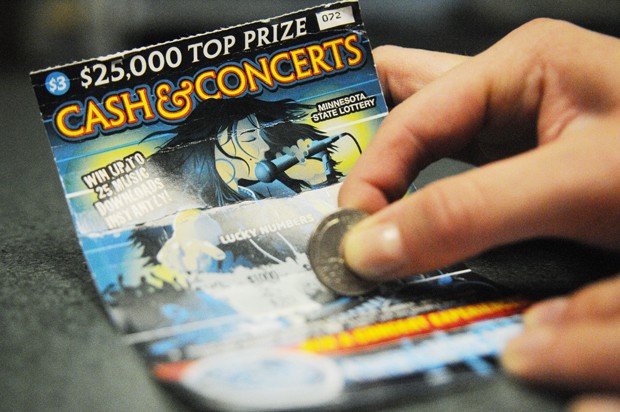The saying goes that the odds of being struck by lightning are greater than the odds of winning the lottery in a given year.
While that might be true for some lotto games, as far as the Minnesota State Lottery’s scratch game Cash & Concerts is concerned, a player is approximately twice as likely to win $25,000 as he is to suffer nature’s wrath.
With Ticketmaster gift cards, music downloads and VIP access, in addition to traditional cash prizes, the state lottery began attempting to reach the 18- to 24-year-old demographic in late April.
But when ticket sales turned up low and the scratch game was taken out of the state’s top-selling ticket line-up just six weeks after its release, the question loomed: How could a lottery game aimed at a demographic that is known for risky behavior and chance-taking sell so poorly?
David Hanson, a senior at the University of Minnesota, illuminated how many students view scratch games when he spoke of gambling as a form of entertainment.
“You can make money while you’re having fun,” he said. “It’s like job, but it doesn’t feel like work.”
When it comes to scratch games though, Hanson said he plays the odds.
“I try to stick to games where the odds are not stacked against you,” he said.
As with all scratch games, the odds of winning a prize while playing Cash & Concerts are printed on the back of the ticket. For this ticket, the odds are one in 3.76.
Hanson, who gambles once every two weeks or so, prefers blackjack and poker to scratch games, a trend that is not uncommon for college males, according to Keith Whyte, the executive director of the National Council on Problem Gambling.
“In general, we would expect the 18-24 age market to have extremely high rates of gambling participation,” Whyte said. This does not apply to every form of gambling, Whyte added, and scratch games seem to be one exception to the rule.
Many casino games such as blackjack and poker allow a player to make choices that can directly lead to winning or losing.
On the other hand, little strategy plays into scratch games, and regardless of the prizes offered, a player’s fate is at the hands of blind chance.
With this in mind, Cash & Concerts’ attempts to reach a younger crowd may have overlooked that scratch games just might not be risky enough for the college-aged population.
“This age group tends to discount the consequences” of their actions Whyte said.
Of young adults, 2-3 percent have some problem with gambling during any given year, and among these problem gamblers, depression and stress increase the odds of taking a chance, Whyte said.
According to the National Center for Responsible Gaming, only 22 percent of colleges have a policy on student gambling. The University of Minnesota’s Student Conduct Code does not have an explicit policy outside of state and federal laws.
A 2007 Personal Safety and Financial Health Report put out by Boynton Health Service showed that approximately 40 percent of students on the Twin Cities campus had gambled in the past year.
According to the research, it’s a safe bet that sports and casino gambling accounted for much of that.
That doesn’t mean the Minnesota State Lottery is going bust.
For the past two fiscal years, the lottery has reported record sales. Taking in more than $480 million in revenue last year alone, the lottery attributes its success to the sales of new scratch cards and second-chance games.
But stemming problem-gambling is still a concern for the state. The Minnesota Department of Human Services recently submitted a new campaign for the NCPG’s Public Awareness Award. The campaign partly targets 18- to 24-year-old problem gamblers
Alongside the added pressure placed on young people to gamble by Cash & Concerts street-team and public relations efforts, “at the least, there is a corresponding responsible gaming message from the state,” Whyte said.








